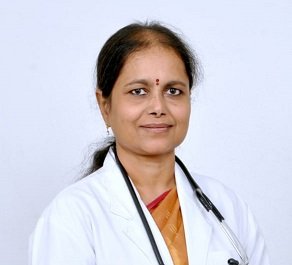Treating a stroke in time saves nine million neurons
October 29, 2018 | Monday | Features | By Dr B Jyothi
The most crucial factor for management and treatment of a stroke is timely assistance. “Time is prime when dealing with a stroke. Every delayed minute kills 1.9 million neurons”
A stroke is a neurological condition where the brain is damaged due to disruption of the blood flow to the brain. It can either occur due to a block in the blood supply or by a bleed in the brain. What was considered an ailment found among older people has changed in recent times due to the current lifestyle trends. Dr B Jyothi, Senior Consultant- Neurology and Stroke specialist at Gleneagles Global Hospitals estimates that one out of seven patients is a young person.
The characteristic symptom of this condition is facial asymmetry, resulting in the patient’s face drooping to a side with the angle of the mouth becoming one-sided, causing them to be unable to smile symmetrically. The patient also experiences speech and language dysfunction where they are unable to speak or comprehend speech. Depending on the location and severity of the stroke, the patient could also suffer from the weakness in the arms or legs, breathing difficulty, episodes of fits, mood swings, and a sudden loss of consciousness.
The most crucial factor for management and treatment of a stroke is timely assistance. “Time is prime when dealing with a stroke. Every delayed minute kills 1.9 million neurons”, says Dr B Jyothi While dealing with a stroke, it is important for the doctor to check with the patient’s companions about the last time the patient was seen to be normal. This helps the doctor assess the severity of the situation. At Gleneagles Global Hospitals, the doctors of the emergency room receive special training to identify and assess stroke patients. They are also instructed on performing the diagnostic tests and providing emergency assistance to manage the condition until it can be attended to by the neurologist.
A stroke can be identified through the performance of a CT scan. This can also help differentiate if the stroke was caused due to a clot or bleed in the brain. An MRI can help the doctor evaluate the age of the stroke and the state of the blood vessels in the brain. Other tests like checking of haemoglobin, kidney tests and checking of sugar levels are carried out to assess the severity of the situation. An ECG and echocardiogram are also performed to assess the heart, as heart problems are a major risk factor for the occurrence of a stroke.
The occurrence of a stroke is highly unpredictable and spontaneous. Ailments like diabetes, hypertension, dyslipidemia, hypercholesterolemia, arrhythmia, heart problems and habits like smoking, alcohol, drugs are common triggers for the same. According to Dr B Jyothi, a stroke can be caused by TB and HIV too, though these occurrences are not very common. While age and the accompanying ailments are risk factors that cannot be modified, there are precautionary measures one can take to avoid this condition. “Avoidance of smoking, maintaining cholesterol levels, controlling sugars & BP, reduction of intake of fats and carbohydrates, and including more activity in your daily life can go a great way in helping you prevent the occurrence of the same,” said Dr B Jyothi.
- Dr B Jyothi, Senior Consultant- Neurology, Gleneagles Global Hospitals, Hyderabad










